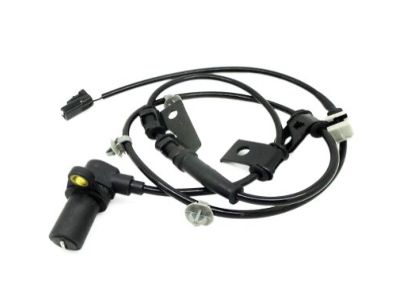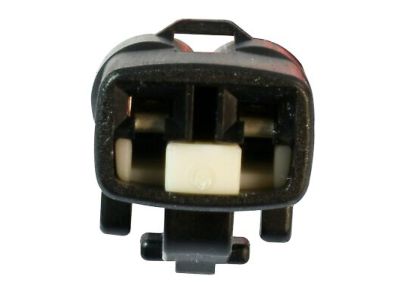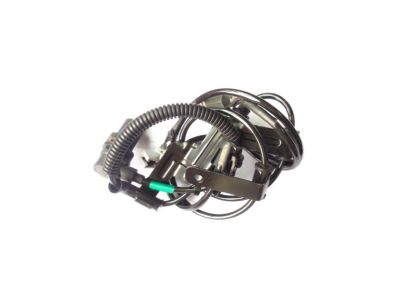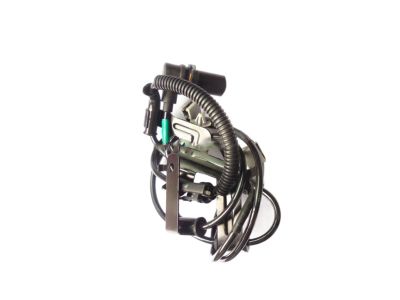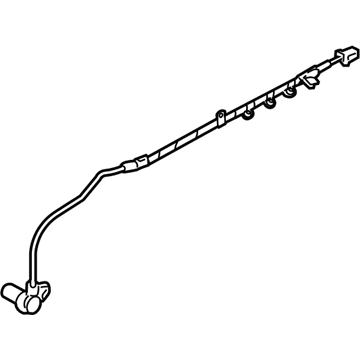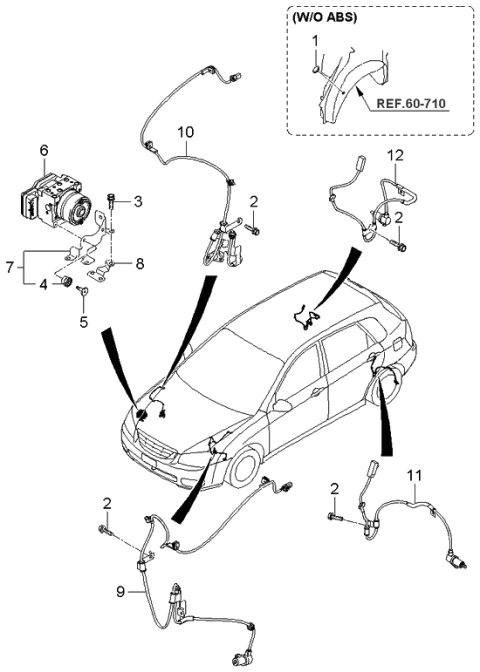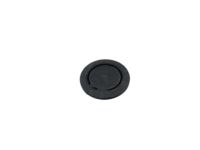The anti-lock brake system is designed to maintain vehicle steer-ability, directional stability and optimum deceleration under severe braking conditions on most road surfaces. It monitors the rotational speed of each wheel and controls the brake line pressure to each wheel during braking, preventing the wheels from locking up. The ABS system has three main components - the wheel speed sensors, the electronic control unit (ECU) and the hydraulic unit. Four wheel speed sensors send a variable voltage signal to the control unit, which monitors these signals, compares them to its program and determines whether a wheel is about to lock up. When a wheel is about to lock up, the control unit signals the hydraulic unit to reduce hydraulic pressure at that wheel's brake caliper. If a problem develops within the system, an "ABS" warning light will glow on the dashboard. A visual inspection of the ABS system can help locate the problem. Inspect the ABS wiring harness, particularly near each wheel. If a wheel sensor harness is damaged, the sensor must be replaced. Make sure the ignition is turned off before unplugging or reattaching any electrical connections. If a dashboard warning light comes on and stays on while the vehicle is in operation, the ABS system requires attention. Check the brake fluid level in the reservoir, verify that the computer electrical connectors are securely connected, check the electrical connectors at the hydraulic control unit, check the fuses, and follow the wiring harness to each wheel to verify that all connections are secure and that the wiring is undamaged. If these checks do not rectify the problem, the vehicle should be diagnosed by a dealer service department or other qualified repair shop. All actual repair work must be done by a qualified automotive technician. To remove and install the wheel speed sensor, loosen the wheel lug nuts, raise the vehicle and support it securely on jackstands, remove the wheel, make sure the ignition key is turned to the Off position, trace the wiring back from the sensor, detaching all brackets and clips while noting its correct routing, then disconnect the electrical connector, remove the mounting bolt and carefully pull the sensor out from the knuckle. Installation is the reverse of the removal procedure. Tighten the mounting bolt securely, install the wheel and lug nuts, tightening them securely, lower the vehicle and tighten the lug nuts to the torque.
Posted by KiaPartsNow Specialist 
